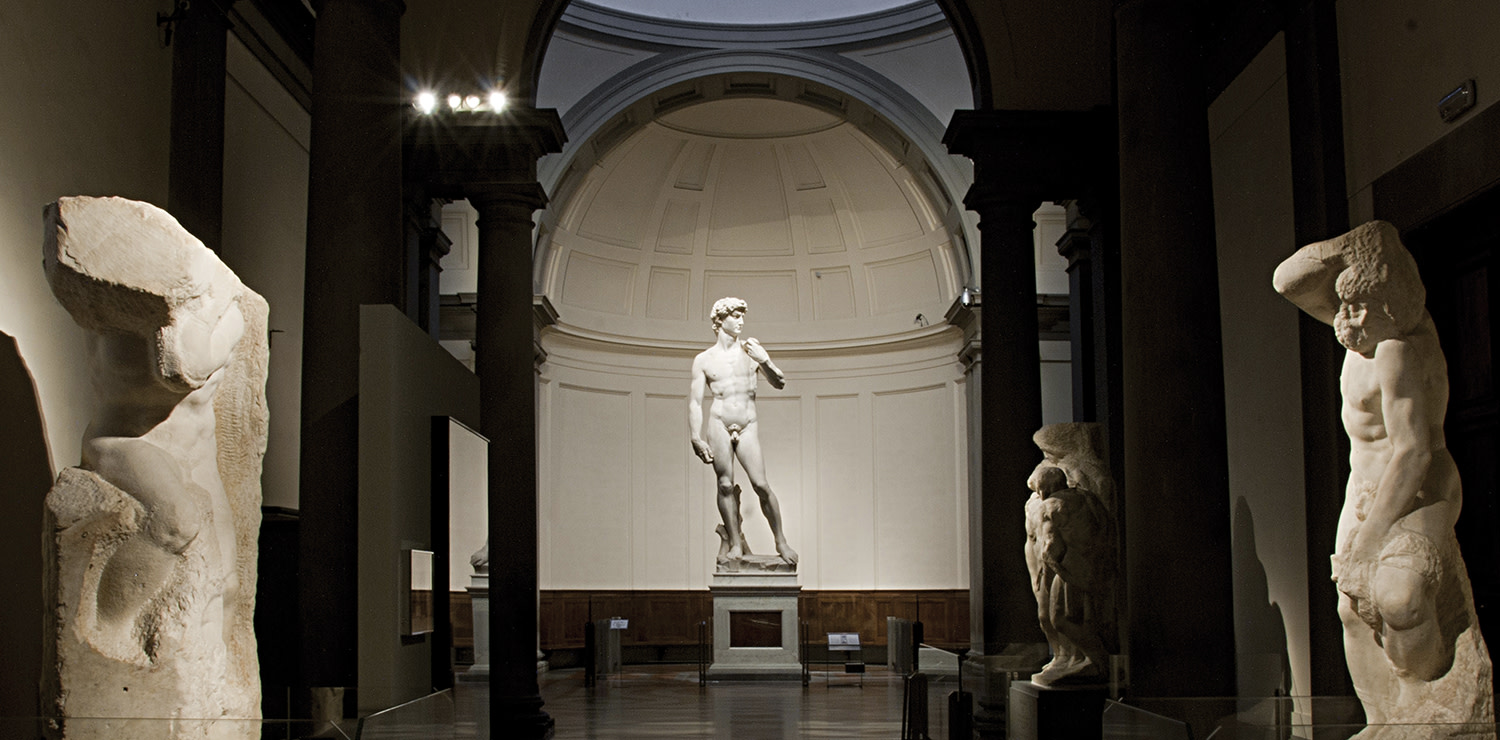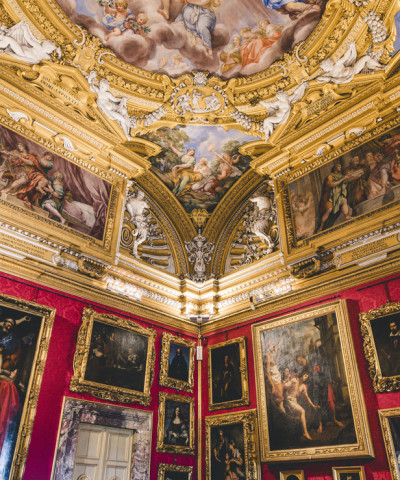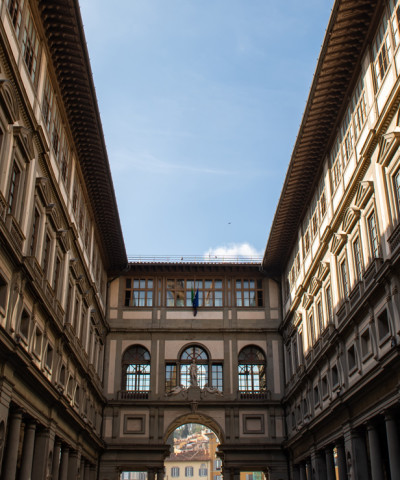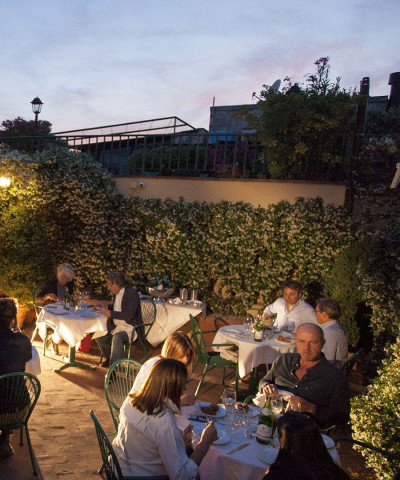The 10 masterpieces of art to see absolutely in Florence
he top 10 Florentine works of art that everyone should see at least once in their lifetime
Florence jealously guards many masterpieces of inestimable value, but if you don't have time to see them all, we suggest an itinerary of 10 unmissable masterpieces. Some you will find among the most beautiful streets and squares of the city, others in the most famous museums of the city. Let's discover them together!
Michelangelo’s David
David is Italy’s ambassador to the world. Michelangelo Buonarroti was commissioned to create the sculpture by the overseers of Florence cathedral on 16 August 1501, for a fee of 400 ducats. The statue was placed at the entrance to Palazzo Vecchio, to symbolise the strength and independence of the Florentines. It remained here until July 1873, when it was decided to move it to the Galleria dell’Accademia to prevent further damage by atmospheric agents. Including the carved pedestal, the sculpture is 517 centimetres tall and weighs 5560 kilos. In Florence today there are three versions of Michelangelo’s David: the original at the Accademia, a copy made in 1910 in Piazza della Signoria and an earlier copy in Piazzale Michelangelo. But nothing compares to seeing the original: the extraordinary Tribune of the Accademia offers a thrilling and unique view of Michelangelo’s colossus.
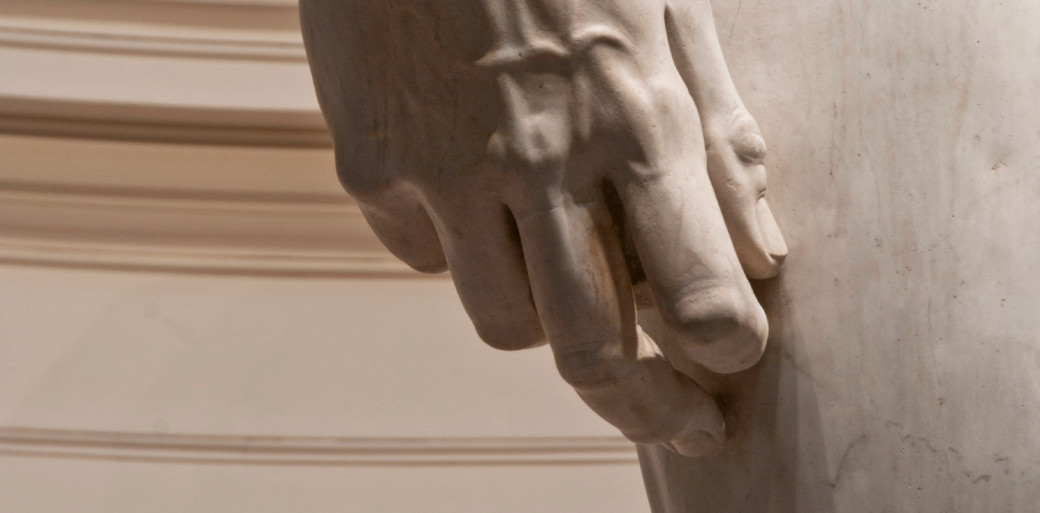 detail of Michelangelo's David
detail of Michelangelo's DavidPrimavera and The Birth of Venus, Sandro Botticelli
In the Uffizi Gallery there are two works by Botticelli that delight visitors from all over the world. We’ll start with an interesting fact: the protagonist of both paintings is Simonetta Cattaneo Vespucci, a Genoese noblewoman loved by Giuliano de’ Medici, the younger brother of Lorenzo the Magnificent, and idolised by Sandro Botticelli, who made her his muse and immortalised her in his most famous paintings. We see her in the guise of the goddess in The Birth of Venus, but she is also one of the Three Graces (the middle one) in the allegorical Primavera. Both enormous in size, the two works display captivating elegance and harmonious composition. The first, entitled Primavera, shows nine figures from classical mythology in a flower-filled meadow, in front of a grove of orange and bay trees. The painting is a celebration of love, peace and prosperity. A total of 138 different plant species have been identified, meticulously painted by Botticelli, perhaps with help from a herbalist. Painted on a panel of poplar wood, the work came to Villa di Castello in 1550, and was described by Giorgio Vasari along with The Birth of Venus. The second of Botticelli’s masterpieces is a detailed depiction of the goddess of love and beauty arriving at the island of Cyprus, born of the sea and blown by the wind god Zephyr and perhaps Aura. Unlike Primavera, The Birth of Venus was painted on canvas, a fairly common medium in the 15th century for decorative paintings for noble residences.
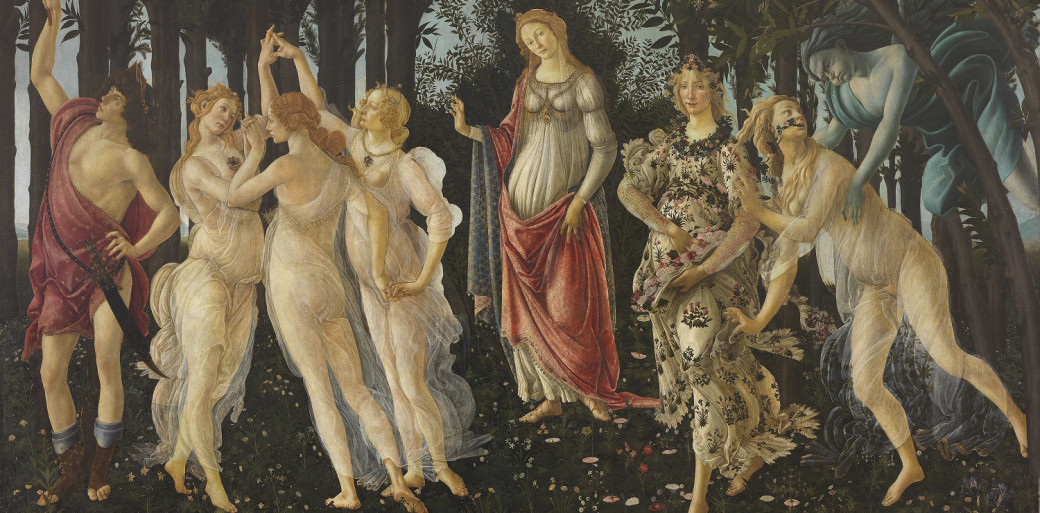 spring, sandro botticelli
spring, sandro botticelliAn admirable example of timeless architecture, the dome consists of eight double-shelled sections, strengthened by 24 meridian and 10 parallel ribs, an elegant structure that supports the two shells and creates a cavity between them to allow access and ascent of the dome. Filippo Brunelleschi completed the work in 1436, sixteen years after the start. He also designed the lantern for his dome, but never built it, as he died before the work began. The intrados is entirely decorated with a Last Judgement, painted in the 16th century by Federico Zuccari and Giorgio Vasari.
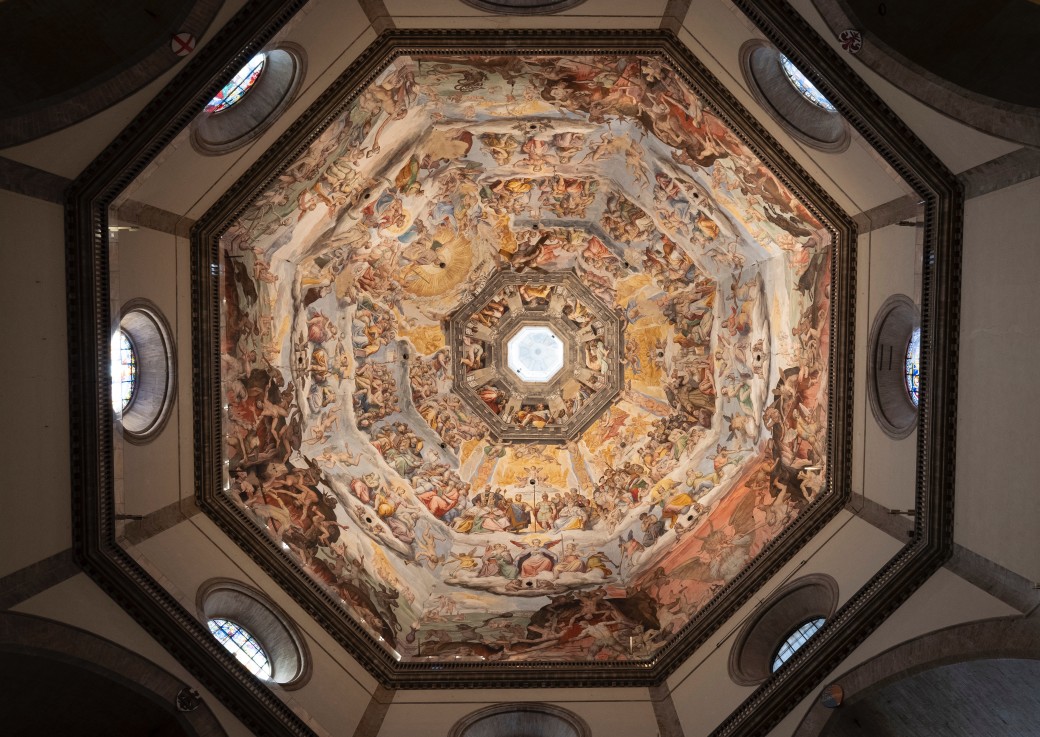 The Dome - Frescos
The Dome - FrescosPorta del Paradiso, Opera del Duomo Museum
The Porta del Paradiso (Gates of Paradise) is the east door of the Baptistery of Florence; the main entrance, originally facing the Cathedral. Created between 1425 and 1452 by the goldsmith and sculptor Lorenzo Ghiberti and his son Vittore, this is his greatest work. The name is credited to Michelangelo Buonarroti, who was delighted by the perfection of the door. Damaged during the great flood of Florence, the original panels were restored and preserved in the Opera Museum in front of the reconstructed ancient facade of the cathedral displayed in the museum, thus recreating the original iconographic relationship between the two.
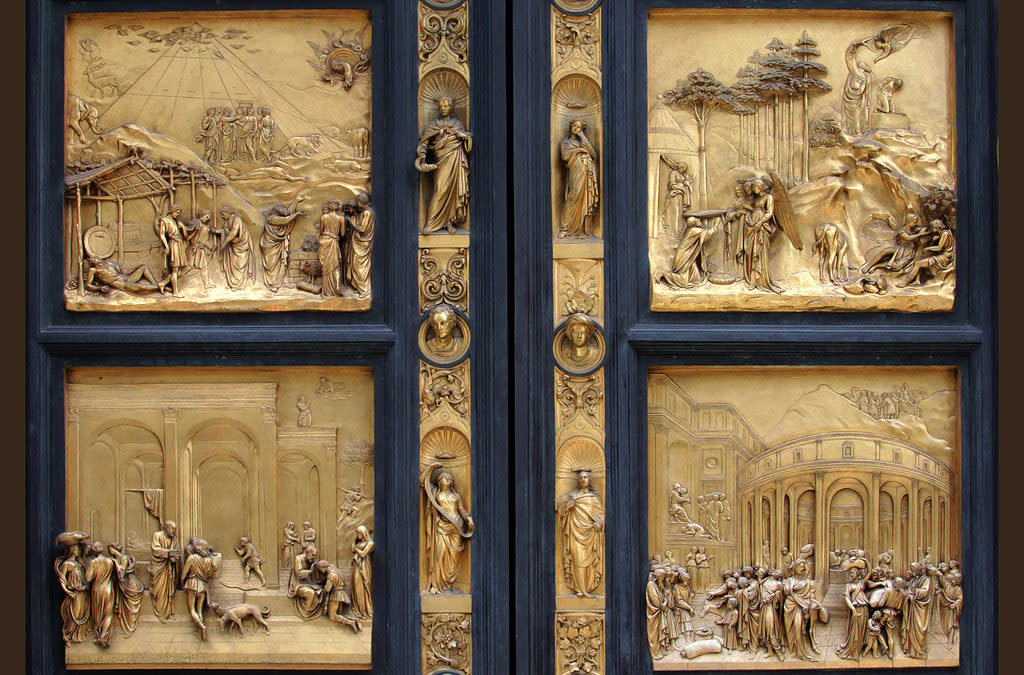 Porta del Paradiso Ghiberti
Porta del Paradiso GhibertiDonatello’s David at the Bargello Museum
The first full nude of the post-classical world, Donatello’s David is one of the masterpieces that paved the way for the Renaissance. An imposing sculpture depicting David, the young shepherd called by God to defend his people from their enemies; he is seen resting after having won a tough fight against the giant Goliath.
Donatello created a very unusual base for the statue: the laurel wreath invites the viewer to walk around it, emphasising its perfect dynamic occupancy of the space.
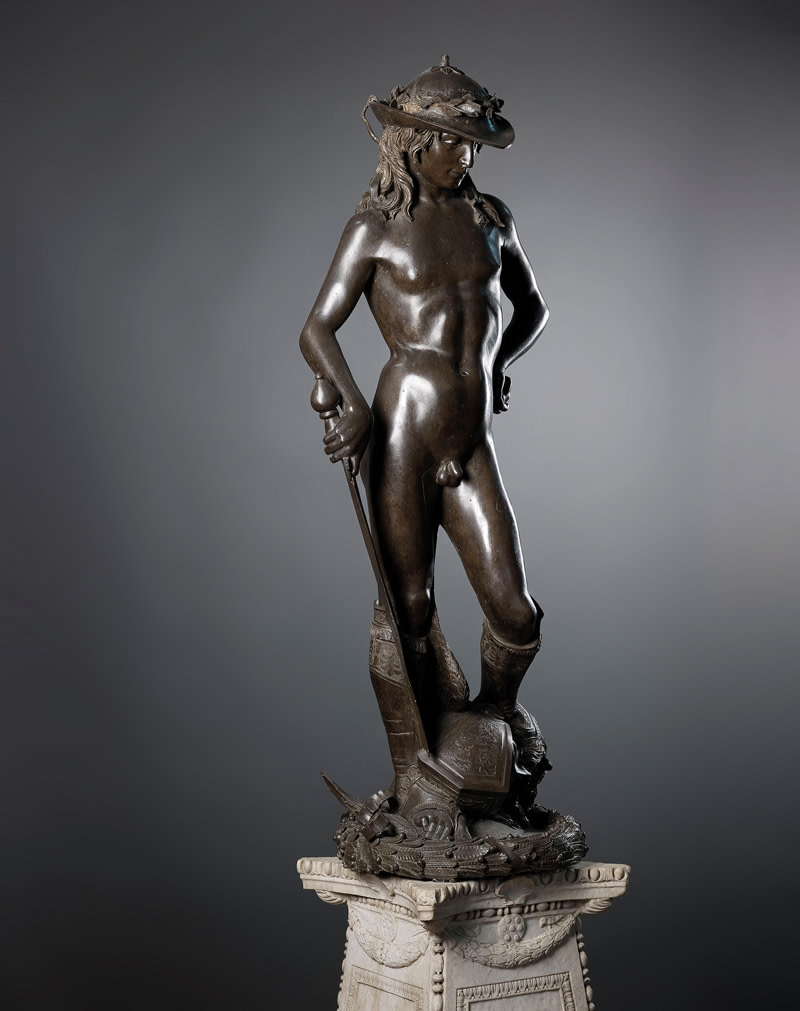 Donatello, David vittorioso, Firenze Museo Nazionale del Bargello
Donatello, David vittorioso, Firenze Museo Nazionale del Bargello Fra Angelico, Annunciation, Museo di San Marco
The first floor of the museum dedicated to this extraordinary artist is home to Fra Angelico’s masterpiece. At the top of the stairs to the third level is an Annunciation as clean and clear as an arrow: sharp faces, gorgeous robes, colours that compose a palette so perfect it is almost divine.
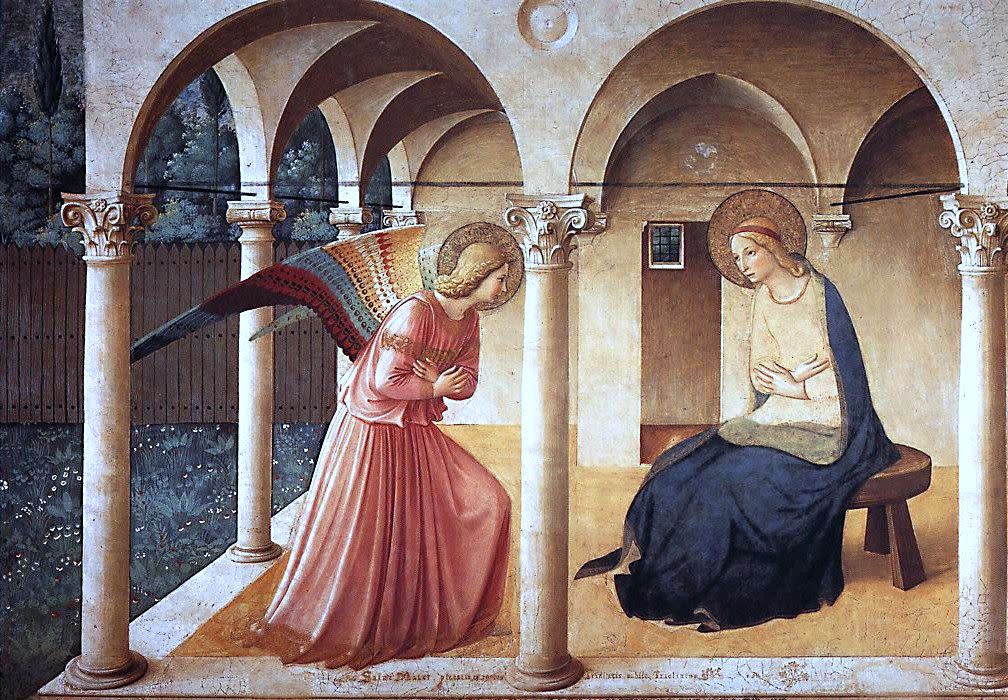 L'Annunciazione del Beato Angelico al museo di San Marco di Firenze
L'Annunciazione del Beato Angelico al museo di San Marco di FirenzeRaphael’s Madonna of the Chair, Palatina Gallery
One of the last tondi of the typically Tuscan 16th century school, and utterly convincing, thanks to the perfect balance of bodies: the Christ child’s plump, rounded form reveals his eminent role in the detail of the elbow, almost as if keeping his distance. He is balanced by his mother, her expression full of a compassion that both attracts and seduces.
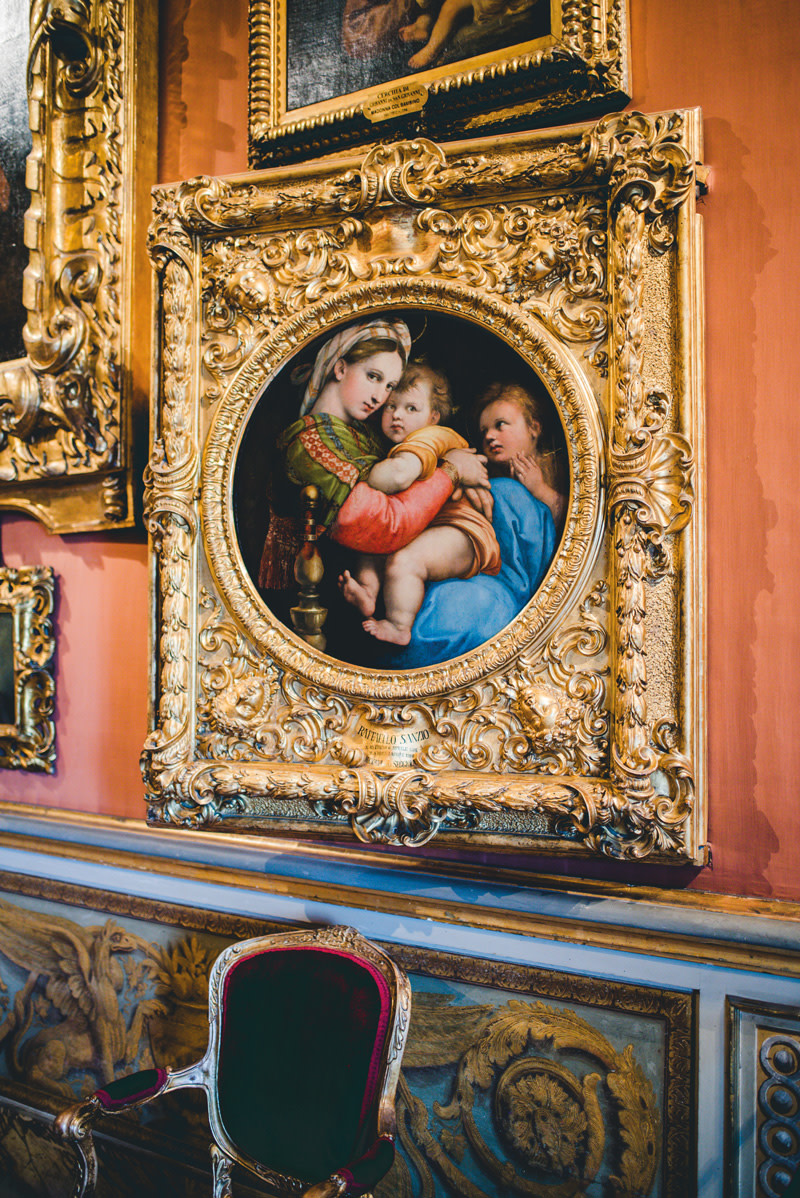 Raffaello, Madonna della Seggiola (1513-1514)
Raffaello, Madonna della Seggiola (1513-1514) The Expulsion from Eden, Brancacci Chapel
The painting of this fresco by Masolino and Masaccio was interrupted in 1428 when Masaccio had to travel to Rome, where he died. Some sixty years would pass before the work was completed, this time by Filippino Lippi. And thanks to this, the chapel offers a wide variety of painting styles: courtly Gothic for Masolino and Renaissance for Masaccio. Original Sin on the right-hand wall contrasts with The Expulsion from Eden by Masaccio, the artist who launched the Renaissance and introduced mathematical perspective. A work whose modernity continues to move us.
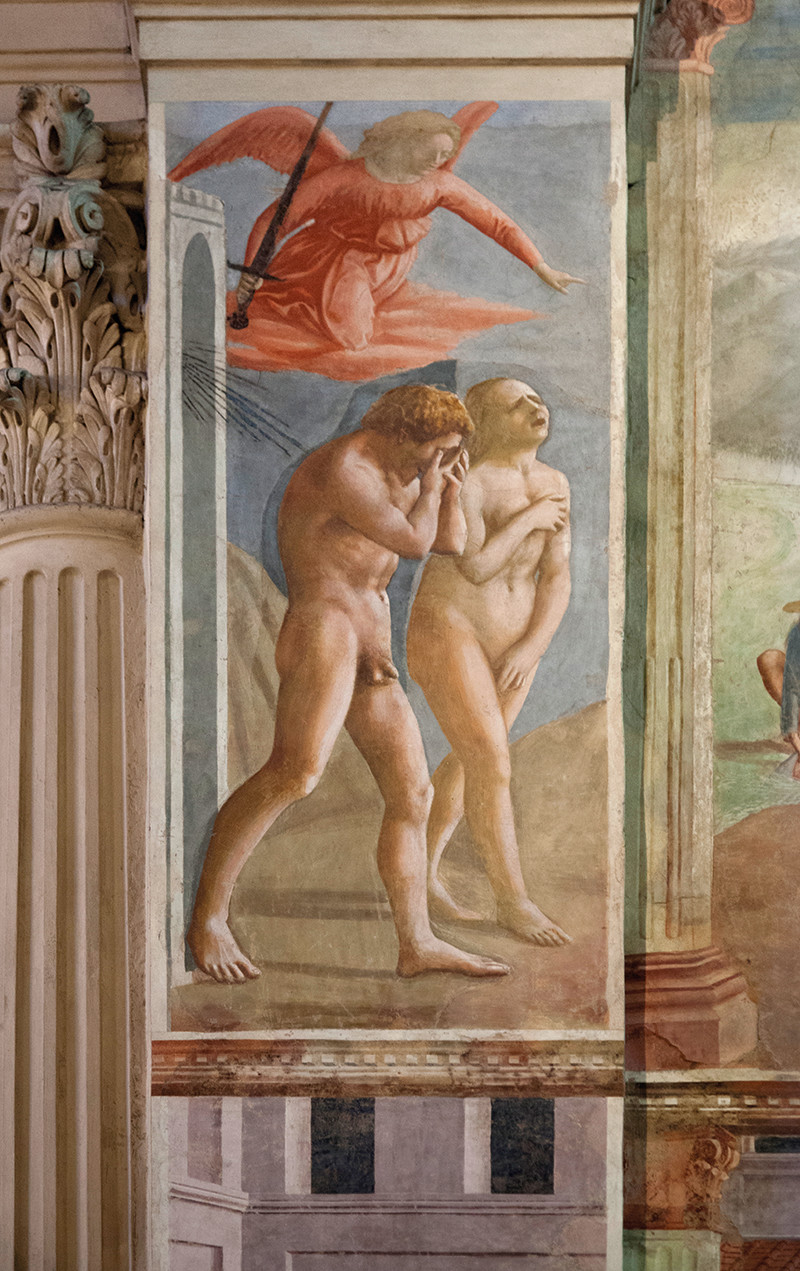 Expulsion from Eden - Brancacci Chapel
Expulsion from Eden - Brancacci ChapelMasaccio’s Holy Trinity, Santa Maria Novella
In the third arch from the left, instead of the altar is the Holy Trinity fresco by Tommaso Guidi, aka Masaccio. This magnificent architectural composition is one of the earliest and most perfect examples of perspective in Renaissance art, and continues to instruct painters, as it did in the early 15th century. In a chapel reminiscent of a classical triumphal arch, we see the Eternal Father at the top, the Holy Spirit in the form of a dove, and the crucified Christ flanked by the Virgin Mary and John the Baptist. Lower down on either side are the figures of the husband and wife who commissioned the work.
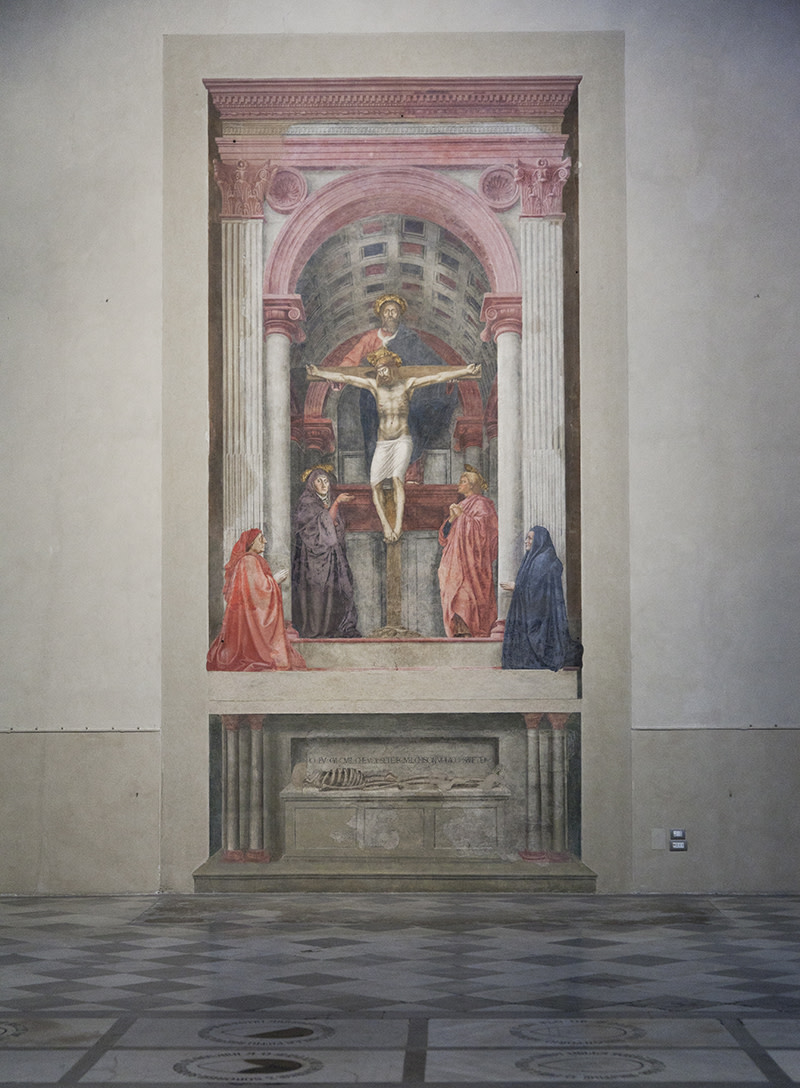 Masaccio’s Holy Trinity - Santa Maria Novella
Masaccio’s Holy Trinity - Santa Maria Novella





